Ryan Hall's Blog, page 367
August 14, 2015
For Neely Spence Gracey, Falmouth is a Family Tradition

Photo: Chris Lotsbom/Race Results Weekly
(c) 2015 Race Results Weekly, all rights reserved. Used with permission.
FALMOUTH, Mass. — Throughout the 43-year history of the New Balance Falmouth Road Race, the event has stayed true to its roots, celebrating friends, family, tradition, and summertime fun.
On Sunday, 12,000 runners are expected to cover the seven miles from Woods Hole to Falmouth Heights, finishing along the waterfront. One athlete in particular, Colorado’s Neely Spence Gracey, embodies the event’s spirit through and through. The 25-year-old is carrying on a family tradition and forging her own connection to the community, all while aiming for a podium finish.
“It’s really exciting to be back,” Gracey told Race Results Weekly, speaking with the glistening Falmouth Heights Beach as a backdrop. “I love Falmouth, the community, and everything about this race.”
Bursting with excitement knowing the race is less than 48 hours away, Gracey is eager to lace up her road racing flats once again on Cape Cod. In 2012 Gracey came to Falmouth to race for the first time, finishing in 11th place (the race was her first after recovering from a broken foot). This year, she’s healthy and ready for more.
What differentiates Gracey from the rest of the elite field assembled here—which includes seven Olympians—is her family ties to the event. Gracey’s father Steve Spence, the 1991 IAAF World Championships Marathon bronze medalist, raced the Falmouth Road Race twice, finishing second in 1988.
Spending a bit of time together at her home in Colorado recently, father and daughter spoke about the upcoming race. Together they worked on form and visualized the competition. Gracey gained even more confidence as race day approached.
“He did get second [place], so I can’t take his opinion too seriously!” Gracey joked with the media, giving her father a hard time. “He definitely has a lot of good [tips] to say. I’m excited to start off my season here. My workout went really well with him biking along side me, and I’ll try to take those form tips and put them to use on Sunday.”
For years, generations of New Englanders have annually made the trip to Cape Cod to participate in the New Balance Falmouth Road Race. Participants and spectators in town celebrate the peak of summer, knowing all to well that the warm weather and sunshine will likely be gone in a month or two, eventually giving way to New England’s harsh winter. In a way the race represents Americana at its finest, congregating generations through the sport and the event’s many post-race barbecues.
But that’s not all.
The Falmouth Road Race is unique in the sense that area families host athletes, welcoming runners into their own homes for a few days before and after the event. Gracey was honored when one family in particular, the Greco family, asked to house her this week.
They chose Gracey because their 11-year-old daughter, Bianca, wanted to run with and learn from a top American woman.
“That’s so awesome, I was super pumped about that,” Gracey said. “It made me that much more excited to come, knowing I was going to stay with a family who was really into running. I’m a coach, and I started running when I was her age as well. It’s near and dear to my heart that I could help and inspire maybe a future star. It’s pretty fun.”
Gracey’s appreciation for the welcoming community is evident in her smile. Unlike most races in America, this event’s focus is to make all who run—elite or back of the pack jogger, young or old—a part of the family, a part of the area’s fabric.
“It really makes it such a special event because it’s not just going and staying in another hotel, by yourself… It’s really fun to come up here, be a part of a family, be in the culture of Cape Cod, get personal tours of the area and everything. It’s really special,” she said. “They really embrace that tradition.”
Between personal connections through her father and inspiration from her host family, Gracey is ready to kick off her fall racing season in style.
“It’s really awesome that [Falmouth] fit in the schedule this year,” said the soon-to-be adidas-sponsored athlete. “It’s great to be back, and it’s always a blast. It’s just so nice here, and I can’t wait to race.”
RELATED: 5 Storylines to Watch at the Falmouth Road Race
The post For Neely Spence Gracey, Falmouth is a Family Tradition appeared first on Competitor.com.
2015 Summer Trail Running Shoe Buyer’s Guide
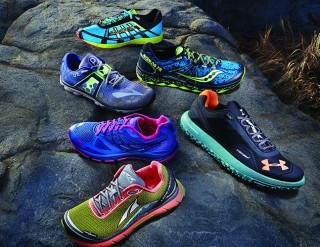
Photo: Nick Nacca
We tested 12 of the summer’s best new trail shoes on all types of terrain to help you find your perfect match.
All trail running shoes are built to handle off-road running. But, like finding the perfect partner, knowing yourself (and your running) will help you hone in on the right match. To find your sole mate, consider the type of trail running you’ll do this summer, the routes you plan to run, and the size, shape and unique characteristics of your feet.
RELATED: 2015 Late Summer/Early Fall Road Shoe Buyer’s Guide
RELATED: 4 Tips for Buying Trail Running Shoes
The post 2015 Summer Trail Running Shoe Buyer’s Guide appeared first on Competitor.com.
Gluten-Free Vs. Grain-Free
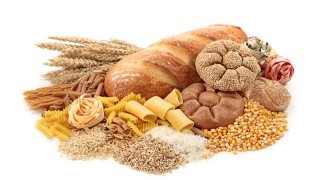
Photo: Shutterstock.com
Republished with permission of VeloPress from The Athlete’s Fix, Pip Taylor’s three-step program to help athletes identify their problem foods and find the foods that make them feel and perform best. Get started at theathletesfix.net.
For some, going gluten-free does not go far enough.
Walk down virtually any aisle of any supermarket and you will find a growing number of gluten-free products. Of course, the food industry both drives the movement and responds to consumer demand, but this rise in commercially available products is nevertheless telling. The quality of these products is questionable and their necessity even more so—have you ever studied the list of ingredients on some foods labeled gluten-free? They might be found in the health food aisles, but that doesn’t give them a free ticket to be considered healthy foods.
Indeed the explosion of products and numbers of those eating gluten free has caused others to question the legitimacy of the gluten-free movement. To what extent are people jumping on the bandwagon as they do with other diet trends, either to lose weight or, as some cynics have postulated, merely to gain attention?
We do know with certainty that both celiac and non-celiac gluten intolerance are real and serious conditions.
Going Grain-Free
When it comes to gluten intolerance—and intolerances or sensitivities in general—we are only just beginning to scratch the surface in our understanding of these interactions between food and body. What is commonly called gluten sensitivity may not be due to gluten at all.
Grains, both those with gluten and those without, contain any number of other proteins and compounds. Gluten just happens to be the one that is most recognized now. But while we may be good at identifying gluten in a scientific sense, our bodies are not always that good at picking it out from other proteins. This means that for those sensitive to gluten, including some with celiac disease, it is not enough to simply avoid gluten; other grain proteins may be good enough impersonators of gluten that our bodies cannot see through the disguise and mount a reaction of the same force and destruction against these proteins as they do against gluten. For those individuals, the end result is the same: damage and inflammation, and confusion as to why they do not seem to improve even when eating strictly gluten free.
The Athlete’s Fix can show you how to go gluten-free or entirely grain-free, if that’s the diet that makes you feel and perform your best. Check out the book to get started on finding your own, personalized healthy diet.
RELATED: Soy, an Unhealthy Health Food?
The post Gluten-Free Vs. Grain-Free appeared first on Competitor.com.
August 13, 2015
4 Nutrients That Help Prevent Stress Fractures
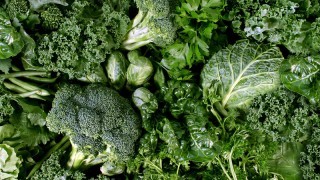
Photo: Shutterstock.com
This article first appeared in Women’s Running
Prevent stress fractures by keeping track of these essential nutrients for your skeleton and your blood.
RELATED: Treating and Preventing Stress Fractures in Running
Magnesium
This nutrient stimulates the production of calcitonin, a bone-preserving hormone. It also helps your body process vitamin D and calcium. Good sources are almonds, bananas, avocados, dried beans, lentils, nuts and whole grains.
Vitamin K
Required for the synthesis of osteocalcin, which provides structure to bone tissue, vitamin K comes in two forms. Good sources of K1 are dark green leafy vegetables like kale, collard greens and spinach. K2 is produced from bacteria in fermented foods, such as ripe cheese and yogurt, and from bacteria in the intestinal tract.
Folacin
Required to produce healthy red blood cells, folacin (aka folic acid) can be found in lentils, garbanzo beans, asparagus, orange juice, spinach and broccoli.
Vitamin B12
This vitamin plays a role in red blood cell development and the metabolism of folacin. Because it occurs naturally only in animal foods, vegetarians and vegans may require supplementation.
RELATED: 3 Steps for Surviving a Stress Fracture
The post 4 Nutrients That Help Prevent Stress Fractures appeared first on Competitor.com.
Goucher, Flanagan Likely To Get Medal Upgrades
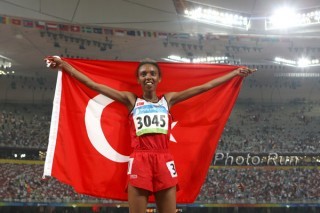
Elvan Abeylegesse, shown here celebrating her silver medal at the 2008 Olympics in Beijing, is likely to have that result annulled. Photo: PhotoRun.net
The Turkish track and field federation announced on Thursday it received word from the International Association of Athletics Federations (IAAF) that Elvan Abeylegesse, who won silver in the 10,000m at the 2007 world championships in Osaka and was slated to compete at the upcoming world championships in Beijing until she pulled out earlier this week citing injury, tested positive for performance-enhancing drugs in a reanalysis of samples from the 2005 and 2007 world championships. An IAAF report earlier this week said that a retesting of samples from those championships confirmed 28 athletes with 32 adverse findings.
As of Thursday, no other athletes had been named due to legal reasons, but the IAAF report said that, “A large majority of the 28 are retired, some are athletes who have already been sanctioned, and only very few remain active in sport. The IAAF is provisionally suspending them and can confirm that none of the athletes concerned will be competing in Beijing.”
A likely result of Abeylegesse’s failed test is that 2007 10,000m world championships bronze medalist Kara Goucher of the United States will be upgraded to silver. Great Britain’s Jo Pavey, who finished fourth, would be awarded bronze.
“Thank you to the scientists who continually develop tests to catch cheats,” Goucher wrote on her Instagram account late Thursday morning, “because yesterday I learned that 2nd place finisher Elvan Abeylegesse failed a retroactive test of her sample from Osaka. While I will never have the pleasure of that moment back or to stand higher on the podium, I am grateful for those who work tirelessly to clean up our sport. 8 years later, justice is served.”
The 32-year-old Abeylegesse—who was born in Ethiopia—has reportedly requested her “B” sample be retested, according to Sports Illustrated. If the “B” sample also tests positive, Abeylegesse’s results from 2007-2009—including her silver medal performances in both the 5,000 and 10,000 meters at the 2008 Olympic in Beijing—will be annulled, meaning that American Shalane Flanagan, who took bronze in the 10,000m at the Beijing Games, would be named the silver medalist.
The post Goucher, Flanagan Likely To Get Medal Upgrades appeared first on Competitor.com.
The Importance of Loving Your Diet

Photo: Shutterstock.com
This year I have spent a lot of time studying the diets of elite endurance athletes. My goal has been to identify common patterns that define “best practices” for other athletes to emulate. I have found several such patterns, but perhaps the most striking thing I have noticed is that, almost without exception, elite endurance athletes enjoy and are completely comfortable with their healthy diet. Maintaining high dietary standards is neither stressful nor onerous for them but satisfying and even automatic.
This feature stands in striking contrast to what I see in the recreational athletes who reach out to me as a sports nutritionist for help with their diet. The majority of these folks are fairly healthy eaters, but they are not happy eaters. To the contrary, their relationship with food is tainted by fear and guilt. They fuss and worry unceasingly about their diet.
RELATED: Why You Should Eat Like an Elite
Healthy eating has two components: healthy food and a healthy relationship with food. You need both to be a fully healthy person. Athletes who eat healthy food but have an unhealthy relationship with food are not fully healthy because their diet tends to become extreme and unbalanced, or else erratic, and because stress and anxiety are as damaging to the body as is bad food.
Most of my clients come to me because they have a physical problem, but the true source of the problem is usually psychological. I help anemic runners whose anemia stems from vegan diets, chronically fatigued cyclists whose chronic fatigue stems from grain-free diets, and triathletes gaining weight, whose weight gain stems from calorie-control diets, among others. But the real issue is the psychology that lies behind these extreme diet choices: a fear of food and a desperate need to control it.
Science backs up my clinical observation that worrying a lot about eating right does not often result in healthier eating or in better health. In 2015, researchers at the University of Canterbury in New Zealand invited subjects to fill out a questionnaire that collected information about their psychological orientation toward food. The subjects were first asked to state whether they associated chocolate cake with “celebration” or “guilt.” The researchers found that those who chose guilt “reported unhealthier eating habits and lower levels of perceived behavioural control over healthy eating when under stress… and did not have more positive attitudes towards healthy eating.”
Other research has demonstrated that people who develop eating disorders tend to share certain psychological characteristics. Specifically, they frequently exhibit low self-esteem and a high degree of neuroticism (or anxiousness). Men and especially women with eating disorders are also far more likely than the average person to have suffered significant adverse experiences in childhood. It is my belief that the same psychological characteristics lie behind the fear-based relationship with food that draws some people to extreme diets, which, while not always resulting in clinical eating disorders, lie on the same continuum.
There is not much we can do to change our personality, and adverse childhood experiences cannot be undone. But this does not mean that an unhealthy relationship with food cannot be fixed. It happens all the time. The first step is simply to recognize that it’s not the food but the relationship that’s the problem.
The current popularity of extreme diets, or diet cults, as I call them, is a major obstacle to the development of a healthy relationship with food. These diets prey upon and exacerbate food fears, nurture food obsession, and serve as stepping stones to the sorts of problems that eventually lead athletes to seek me out for help, as well as to full-blown eating disorders.
I am not a psychologist; I do not treat eating disorders or talk to athletes about low self-esteem, neuroticism, and adverse childhood experiences. My way of helping athletes develop a healthy relationship with food is to encourage them to eat the way that the healthiest people—elite endurance athletes—eat.
There are five key habits that define this way of eating. Virtually all elite endurance athletes eat everything (forbidding no specific foods or food groups), eat quality (prioritizing natural, whole foods), eat carbohydrate (placing high-carb foods at the center of all meals and most snacks), eat plenty (allowing their body’s true energy needs to dictate how much they eat rather than heeding strict calorie limits), and eat individually (customizing their diet to fit their individual needs and preferences).
RELATED: Want to Run Faster? Eat More Carbs!
Elite endurance athletes practice these eating habits because they must practice them to be successful. Running and other endurance sports are so ultra-competitive at the international level that even the most gifted racers cannot win with inferior training methods or dietary practices. The five habits I have identified have become universal across all endurance disciplines and national boundaries because they work better than the alternatives.
Yet these same five habits foster a healthy relationship with food. Eating everything works against a fear of eating particular foods or food groups. Focusing on overall quality is a saner way to maintain high dietary standards than is selecting foods based on some weird conceptual stand-in for quality (such as how long humans have presumably been eating the various food types).
Maintaining a carbohydrate-centered diet promotes a healthy relationship with food because every major traditional cultural cuisine is carb-centered: rice-centered in India and China, potato-centered in the United Kingdom, bread-centered in central Europe, etc. Elite endurance athletes eat in culturally normal ways, but with above-average quality standards. This allows them to continue to enjoy familiar foods they enjoyed in their youth, to share holiday feasts with family and restaurant meals with friends, and to just generally feel as though they are not continuously swimming against the tide with their diet.
Eating plenty is salutary because it is how we are meant to regulate the amount of food we eat. It’s how animals and infants do it. But in the modern world, most people lose the ability to listen to their body and to eat according to its signals. We either mindlessly overeat because the television tells us to or we decide our body cannot be trusted and eat consistently less than our body asks for fear of gaining weight. But the leanest athletes, the pros, let their body call the shots.
Eating individually encourages a healthy relationship with food in a similar way. Nearly all popular diets at least tacitly discourage individuality, forcing all of their followers to start over with a one-size-fits all solution instead of allowing them to simply improve their existing (and presumably preferred) eating habits. Elite athletes allow themselves to customize their healthy diet to satisfy their personal preferences. They also pay attention to how different eating patterns affect their body and tweak them accordingly, not worrying about what everyone else is doing.
If you’re genuinely afraid of meat, or grains, or sugar, or dairy, or some other nutrient or food type; if you worry a lot about eating the wrong things, and feel guilty when you do; if you have a history of trying extreme diets; or if maintaining your current dietary standards feels like work to you, then try something different. Try eating like the healthiest and happiest eaters on earth, who just happen to be the world’s best practitioners of the sport you love.
RELATED: Eat Like a Kenyan, Run Like a Kenyan
The post The Importance of Loving Your Diet appeared first on Competitor.com.
Trail of the Week: Half Dome, Yosemite National Park

Photo: Shutterstock.com
Our Trail of the Week feature is made possible through a partnership with Trail Run Project.
Perhaps one of the most famous routes in the United States, trail runners (and many, many hikers) often take the trail from the Yosemite Valley floor up to the summit of Half Dome, one of the iconic features of Yosemite National Park in California.
First thing’s first: This is a hard trail to run at a good pace, for a number of reasons. One, it’s a steady elevation gain of about 4,800 feet over the course of eight miles to the top, on rugged terrain. Secondly, this is one of the most famous hikes in the U.S., and there will be hundreds of others on this trail with you, especially on summer weekends. The trail is so popular that the National Park Service now requires permits seven days a week while the cables are up during the summer months.
But this is still a bucket-list route for trail runners due to the challenge and unbelievable amount of beauty that awaits. Along the way, you’ll see outstanding views of Vernal and Nevada Falls, Liberty Cap, Half Dome, and—from the shoulder and summit—panoramic views of Yosemite Valley and the High Sierra.
Most people take 10 to 12 hours to hike to Half Dome and back; some take longer. If you plan on running during the day, it’s smart to leave around sunrise (or earlier) and then have a non-negotiable turn-around time. For instance, if you haven’t reached the top of Half Dome by 3:30 pm, you’ll turn around. Check for sunrise and sunset times before you run. Regardless, each person should carry a flashlight or headlamp with good batteries (runners commonly struggle down the trail after dark because they don’t have a flashlight). Although the trail is well marked, you should be prepared with a good topographic map and compass and know how to use them.
Most people begin the run from Happy Isles (shuttle stop #16), which is about a half-mile from the trailhead parking lot or about 3/4 of a mile from Curry Village (parking available). Shuttle service doesn’t begin until 7 a.m., so if you’re arriving prior to then, you can walk on the road (closed to all but authorized vehicles) from either parking area to the trailhead.
Start the journey on the John Muir Trail: Happy Isles to Half Dome Trail. You can either stay on the JMT all the way to Half Dome Trail for a longer but mellower run or turn left onto Mist Trail after one mile. This route follows Mist Trail for an up close and personal view of Vernal and Nevada Falls. Eventually, you’ll merge back onto the JMT. After just over 5 miles, look for the Half Dome Trail to branch off to the left.
The trail steadily climbs to the north-northwest through the forest for roughly a mile before turning west and then southwest toward Half Dome. You’ll eventually emerge from the tree-cover onto solid granite and begin ascending a steep series of switchbacks to a saddle below the cables.
The most famous–or infamous–part of this trail is the ascent up the cables. The two metal cables allow hikers to climb the last 400 feet to the summit without rock climbing equipment. Since 1919, relatively few people have fallen and died on the cables. However, injuries are not uncommon for those acting irresponsibly.
The Half Dome cables usually go back up the Friday before Memorial Day (conditions permitting) and come down the day after Columbus Day.
Need To Know
Bring well broken-in boots or shoes with good ankle support and good traction. Some of the most common injuries Half Dome runners suffer are blisters and ankle injuries; good footwear is the best way to prevent these problems.
Many people find gloves helpful on the cables. However, if you bring your gloves up, pack them out. Hundreds of pounds of rotting gloves otherwise accumulate.
The only treated water on the trail is available (summer only) at a drinking fountain at the Vernal Fall Footbridge (less than a mile from the trailhead). Merced River water is available up to Little Yosemite Valley, however you should treat this water by boiling, using iodine, or using a giardia-rated water filter. Drinking untreated river water may cause significant illness.
Runner Notes
Although this trail is technically “runnable,” you’d be hard pressed to keep good pace on this trail due to a host of factors.
This is an ICONIC trail. You’ll be “running” with hundreds of your closest friends on the way to Half Dome.
The grade during the final approach to Half Dome is incredibly steep and a fall could bedeadly
The Data
Miles: 14.5
Runnable: 72 percent
Singletrack: 90 percent
Average Grade: 12 percent
Max Grade: 69 percent
Total Ascent: 4,709 feet
Total Descent: -4,708 feet
Highest Elevation: 8,599 feet
For a closer look, check out the interactive map, data, photos and virtual run simulator courtesy of Trail Run Project:
The post Trail of the Week: Half Dome, Yosemite National Park appeared first on Competitor.com.
Behind the Scenes of the Latest Saucony 26Strong Photo Shoot
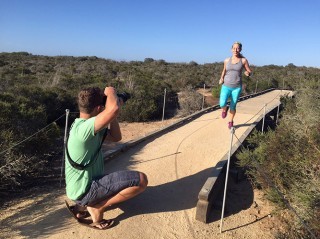
For the third year in a row, Competitor and Saucony are collaborating on 26Strong, a program pairing 13 experienced marathon mentors (coaches) with 13 first-time marathon runners (cadets) who are training for the Chicago Marathon on Oct. 11. Two of the teams recently logged some training miles together in sunny San Diego, and participated in photo shoot for the September issue of Competitor.
Click through the gallery for a sneak peak of the weekend.
Photo Gallery
1 of {count}
Back to Start
View Larger Image
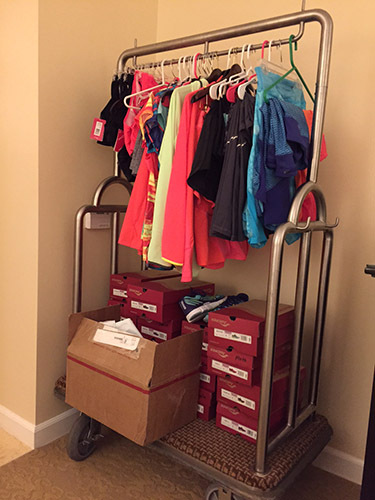
26Strong Photo Shoot
Lots of outfit options steamed and ready to go. By the end of the day, and many outfit changes, everyone agreed it was best the shoot wasn’t “scratch ‘n sniff.”
View Larger Image

26Strong Photo Shoot
Cadet Kristi Dushek’s, a nursing student from Alexandria, VA, outfit selections.
View Larger Image
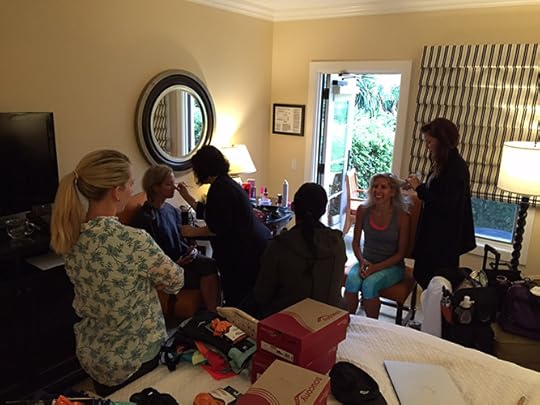
26Strong Photo Shoot
Hair, makeup happened after an early morning run through Torrey Pines State Natural Preserve.
View Larger Image

26Strong Photo Shoot
Photographer Nils Nilsen snapping Catherine Hopper, a coach from Richmond, Va., stretching in Mance Buchanon Park under the watchful eye of coach Jessica Hofheimer from Reston, Va.
View Larger Image
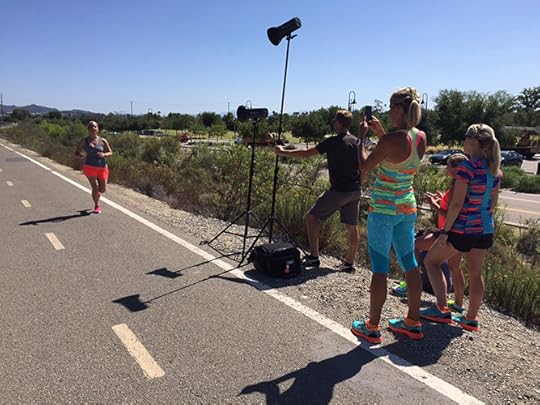
26Strong Photo Shoot
Lights and lots of cameras were waiting for Dushek as she ran down the trail.
View Larger Image

26Strong Photo Shoot
Hopper posing for a head shot.
View Larger Image
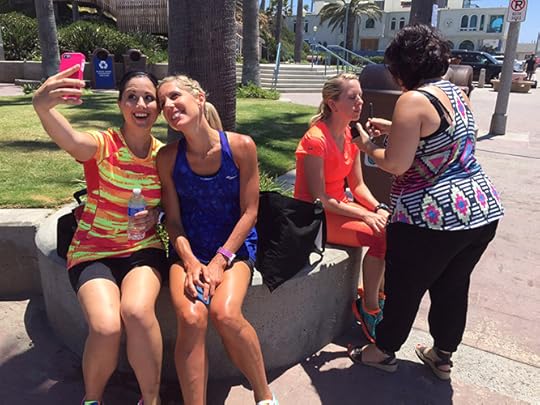
26Strong Photo Shoot
A selfie for Dushek and Hofheimer while Richmond, Va.,-based cadet Lauren Fisher received a seaside touch up from makeup artist Antonella Annibale in Oceanside.
View Larger Image

26Strong Photo Shoot
Nilsen was waiting in the bushes to photograph the crew on their post-lunch run.
View Larger Image

26Strong Photo Shoot
Hofheimer and Dushek during some afternoon downtime at the Hotel Estancia in La Jolla.
View Larger Image
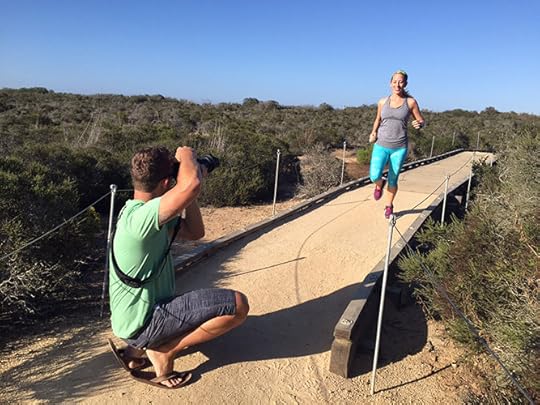
26Strong Photo Shoot
Fisher on an evening run in Torrey Pines.
View Larger Image
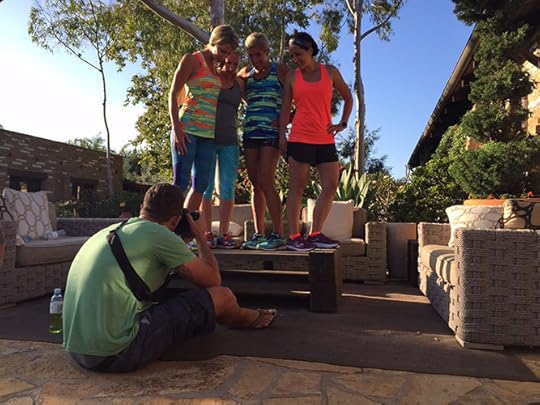
26Strong Photo Shoot
Doesn’t everyone stand on a table after a run?
View Larger Image

26Strong Photo Shoot
That’s a wrap! Dushek, Hofheimer, Nilsen’s assistant Nick Isabella, Nilsen, Hopper and Fisher were all smiles at the end of the day.
Related Galleries

Scenes From the Saucony 26 Strong Photo Shoot in San Diego

More Galleries
The post Behind the Scenes of the Latest Saucony 26Strong Photo Shoot appeared first on Competitor.com.
Report: Nike Executive Allegedly Threatened To Kill Brooks Coach At USAs

Hayward Field, where the alleged incident occured. Photo: Kennett Mohrman
In a bizarre story adding to an already wild week in track and field, letsrun.com is reporting that Nike’s global director of athletics, John Capriotti, aggressively confronted and threatened to kill Danny Mackey, head coach of the Brooks Beasts Track Club, at the USA Track & Field Championships in Eugene, Ore., on Thursday, June 25.
Letsrun.com obtained a copy of the Informational Report Mackey filed with the University of Oregon’s Police Department, which alleges Capriotti aggressively approached Mackey in the athlete medical tent area, insulted him and threatened to kill him. Several witnesses present at the time corroborated Mackey’s description of how the event unfolded.
“You know what you [expletive] did. I’m gonna [expletive] kill you,” Mackey alleges Capriotti whispered into his ear after aggressively poking him in the chest with two fingers. Several sources familiar with the incident told Let’s Run they believe Capriotti’s attack on Mackey resulted from the recruitment of an unnamed female athlete both Nike and Brooks were pursuing at the time.
MORE: LetsRun.com
The post Report: Nike Executive Allegedly Threatened To Kill Brooks Coach At USAs appeared first on Competitor.com.
August 12, 2015
Video: A Look at Jenny Simpson’s Training Leading Up to Worlds
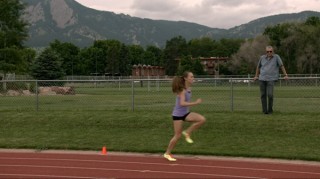
New Balance has put together a four-part “Steps to Beijing” documentary on Jenny Simpson as she prepares for the 2015 World Championships later this month in Beijing, China. The second episode takes a look at her typical day of training, which involves two different running sessions, strength training, rest and more.
The film was produced by NAIL out of Providence, R.I., and directed by Emmy Award winning Tiny Elephant, which was founded by Jeffrey DeChausse.
RELATED: Watch Episode 1
The post Video: A Look at Jenny Simpson’s Training Leading Up to Worlds appeared first on Competitor.com.
Ryan Hall's Blog
- Ryan Hall's profile
- 21 followers



